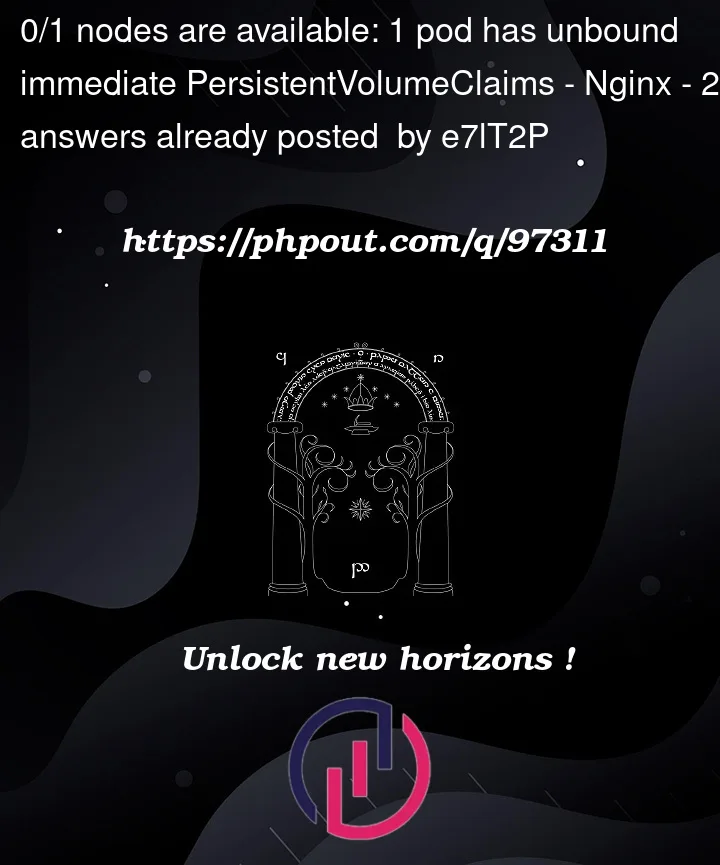As the documentation states:
For each VolumeClaimTemplate entry defined in a StatefulSet, each Pod
receives one PersistentVolumeClaim. In the nginx example above, each
Pod receives a single PersistentVolume with a StorageClass of
my-storage-class and 1 Gib of provisioned storage. If no StorageClass
is specified, then the default StorageClass will be used. When a Pod
is (re)scheduled onto a node, its volumeMounts mount the
PersistentVolumes associated with its PersistentVolume Claims. Note
that, the PersistentVolumes associated with the Pods’ PersistentVolume
Claims are not deleted when the Pods, or StatefulSet are deleted. This
must be done manually.
The part I’m interested in is this: If no StorageClassis specified, then the default StorageClass will be used
I create a StatefulSet like this:
apiVersion: apps/v1
kind: StatefulSet
metadata:
namespace: ches
name: ches
spec:
serviceName: ches
replicas: 1
selector:
matchLabels:
app: ches
template:
metadata:
labels:
app: ches
spec:
serviceAccountName: ches-serviceaccount
nodeSelector:
ches-worker: "true"
volumes:
- name: data
hostPath:
path: /data/test
containers:
- name: ches
image: [here I have the repo]
imagePullPolicy: Always
securityContext:
privileged: true
args:
- server
- --console-address
- :9011
- /data
env:
- name: MINIO_ACCESS_KEY
valueFrom:
secretKeyRef:
name: ches-keys
key: access-key
- name: MINIO_SECRET_KEY
valueFrom:
secretKeyRef:
name: ches-keys
key: secret-key
ports:
- containerPort: 9000
hostPort: 9011
resources:
limits:
cpu: 100m
memory: 200Mi
volumeMounts:
- name: data
mountPath: /data
imagePullSecrets:
- name: edge-storage-token
volumeClaimTemplates:
- metadata:
name: data
spec:
accessModes:
- ReadWriteOnce
resources:
requests:
storage: 1Gi
Of course I have already created the secrets, imagePullSecrets etc and I have labeled the node as ches-worker.
When I apply the yaml file, the pod is in Pending status and kubectl describe pod ches-0 -n ches gives the following error:
Warning FailedScheduling 6s default-scheduler 0/1 nodes are
available: 1 pod has unbound immediate PersistentVolumeClaims.
preemption: 0/1 nodes are available: 1 Preemption is not helpful for
scheduling
Am I missing something here?




2
Answers
K3s when installed, also downloads a storage class which makes it as default.
Check with
kubectl get storageclass:K8s cluster on the other hand, does not download also a default storage class.
In order to solve the problem:
Download rancher.io/local-path storage class:
kubectl apply -f https://raw.githubusercontent.com/rancher/local-path-provisioner/master/deploy/local-path-storage.yaml
Check with
kubectl get storageclassMake this storage class (local-path) the default:
kubectl patch storageclass local-path -p '{"metadata": {"annotations":{"storageclass.kubernetes.io/is-default-class":"true"}}}'
You need to create a PV in order to get a PVC bound. If you want the PVs automatically created from PVC claims you need a Provisioner installed in your Cluster.
First create a PV with at least the amout of space need by your PVC.
Then you can apply your deployment yaml which contains the PVC claim.